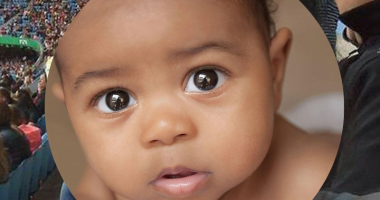How To Baby Proof Your Home – As a parent, ensuring the safety of your child is one of your top priorities. This means baby-proofing your home to prevent accidents and injuries. Baby proofing may seem overwhelming, but with some planning and preparation, it can be a straightforward process. In this article, we will provide you with some essential tips on how to baby-proof your home effectively.
The Importance of Baby Proofing
Babies are curious and love to explore their surroundings, but they also don’t understand the dangers that exist in the world.
This is why it’s crucial to take steps to baby-proof your home. Babyproofing can help prevent accidents, such as falls, burns, and poisonings. By taking the time to baby-proof your home, you can ensure your baby is safe and secure.
Understanding The Risks
The first step in baby-proofing your home is to understand the risks. Common household hazards include sharp corners, loose electrical cords, and toxic chemicals. Once you have identified the risks, you can start taking steps to mitigate them.
Locking Up Dangerous Items
One of the most straightforward ways to prevent accidents is to lock up dangerous items. This includes items such as cleaning supplies, medications, and personal care products. You can use child-resistant locks or place these items out of reach of curious little hands.
Also read | Is coconut oil good for infant eczema? Other natural remedies
Covering Sharp Corners
Sharp corners on furniture and other objects can cause serious injuries to young children. To prevent these accidents, consider covering sharp corners with foam corner protectors or removing the object from the room entirely.
Securing Loose Cords
Loose electrical cords can be a choking hazard for young children. To prevent this, secure cords by tucking them away or using cord covers. Additionally, make sure to unplug electrical devices when not in use to reduce the risk of electrocution.
Installing Safety Gates
Safety gates are a crucial component of baby-proofing your home. They can be used to block off stairways, fireplaces, and other dangerous areas. Look for gates that are made of sturdy materials and have been tested for safety.
Plugging Up Outlets
Young children are naturally curious, and electrical outlets can be a temptation. To prevent electrocution, use outlet covers to plug up unused outlets. Additionally, consider installing tamper-resistant outlets, which only allow for the insertion of a plug when pressure is applied to both prongs.
Setting The Right Temperature
Hot water and appliances can pose a serious threat to young children. To prevent burns, set your water heater to no more than 120°F and make sure that all appliances have automatic shut-off features.
Securing Furniture
Furniture can tip over and cause serious injuries to young children. To prevent these accidents, secure furniture to the wall using brackets or anchors. Additionally, make sure to secure any tall or heavy items such as bookcases and televisions.
Staying Vigilant
While these tips can help you get started, it is important to remember that baby-proofing is an ongoing process. As your child grows, their ability to access new areas of your home will increase, so it is important to stay vigilant and make changes as needed.
Don’t Miss | 10 local remedies to treat heat rash in babies and adults
What to Look for in the Best Baby Proofing Kit
When shopping for a baby-proofing kit, there are several key factors to consider.
- Safety Standards: Make sure the products in the kit meet the safety standards set by organizations like the Consumer Product Safety Commission.
- Versatility: Look for a kit that can be used in different areas of your home, such as the kitchen, bathroom, and living room.
- Ease of Use: The products in the kit should be easy to install and use.
- Quality: Look for products made from high-quality materials that are durable and long-lasting.
Essential Baby Proofing Products
Here are some of the essential baby-proofing products that should be included in the best baby-proofing kit:
- Cabinet and Drawer Locks
- Outlet Covers
- Corner and Edge Protectors
- Door Stoppers
- Safety Gates
- Cupboard Latches
- Drawer and Cabinet Latches
Conclusion
Baby proofing your home may seem like a daunting task, but with some planning and preparation, it can be a straightforward process. By understanding the risks, locking up dangerous items, covering sharp corners, securing loose cords, installing safety gates, plugging up outlets, setting the right temperature, securing furniture, and staying vigilant, you can keep your child safe and prevent accidents and injuries.
You may also like | 7 Signs of unhappy toddler
FAQs
- What are common household hazards for young children? Common household hazards include sharp corners, loose electrical cords, and toxic chemicals.
- How can I prevent accidents from sharp corners? To prevent accidents from sharp corners, consider covering sharp corners with foam corner protectors or removing the object from the room









